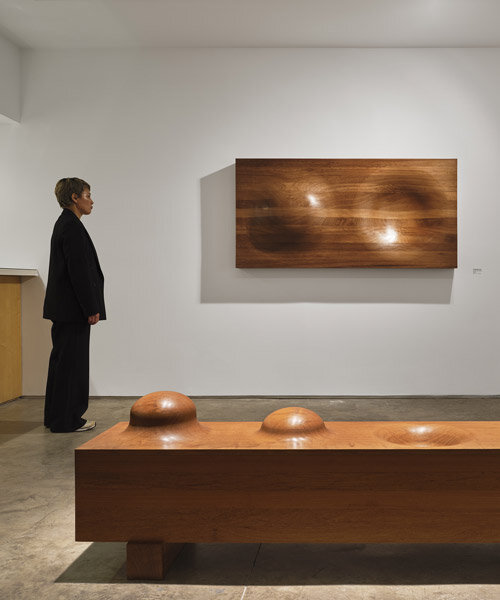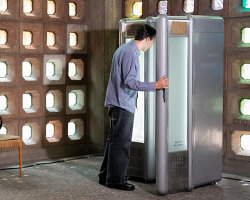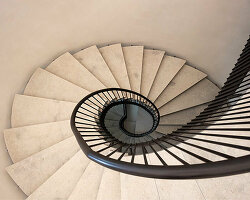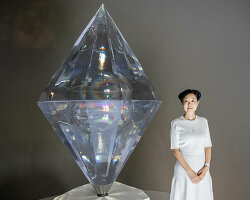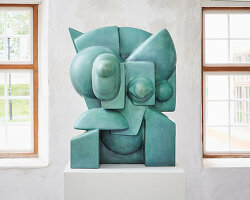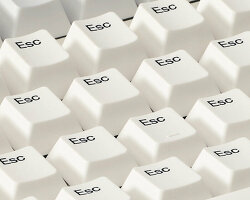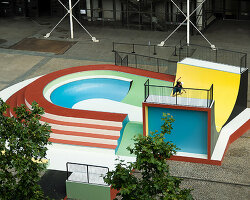jorge palacios solo exhibition opens at seizan gallery
On the evening of January 25th, 2024, New York’s art scene gravitated towards Chelsea’s SEIZAN Gallery for the opening of Jorge Palacios’ latest solo exhibition, Paradoxes of Cognitive Constructs: Physics as Language. The title alone promises an exploration of abstract ideas and the tangible scientific fact. It’s what the sculptor is most known for. Inside the gallery space, found just below the High Line park at 525 West 26th Street, sinuous works sculpted in wood and porcelain-like Krion are anchored throughout. Although each piece is a static solid, it is a representation of fluid movement. The curves are not arbitrary, but observations of natural phenomena.
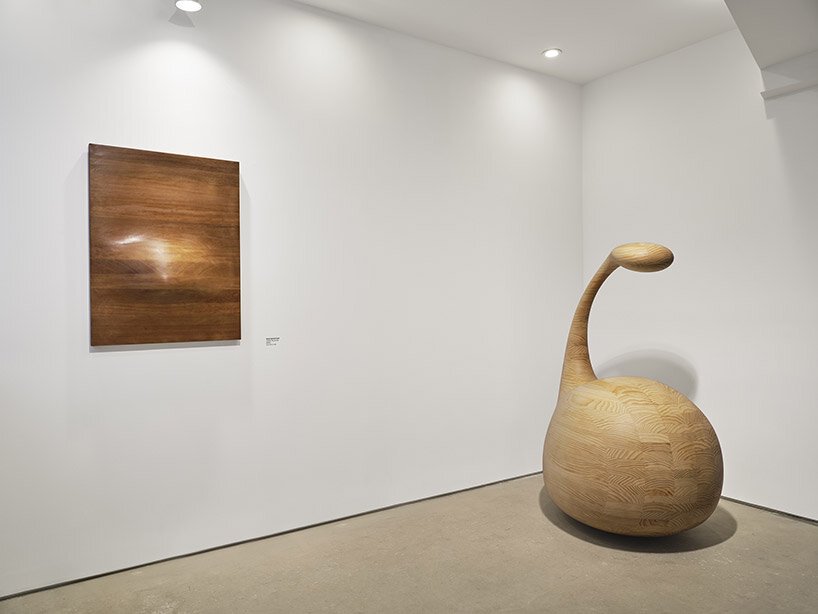 installation view of Jorge Palacios: Paradoxes of Cognitive Constructs: Physics as Language at SEIZAN Gallery
installation view of Jorge Palacios: Paradoxes of Cognitive Constructs: Physics as Language at SEIZAN Gallery
all images by Thomas Barrett, courtesy SEIZAN (unless otherwise stated)
An inspiration which artist Jorge Palacios often revisits, for instance, is Thomas Parnell’s Pitch Drop experiment — the longest running lab experiment in science history, initiated in 1927 — which observes the solid-like qualities of the slowest moving liquid and thickest known fluid. He further explores material plasticity thorough elements containing both liquid and solid properties such as snow, sand, and volcanic magma. Another inspiration is recurring morphologies found throughout nature, regardless of medium, such as the circular forms caused by water vortexes, tornadoes, and galaxies of rotating stars and gases. Through his practice, Palacios hopes to recreate such effects, implying that his artworks have their own viscosity, and are being affected by surface tension or pressure.
Paradoxes of Cognitive Constructs: Physics as Language will be on view at SEIZAN Gallery until March 9th. In time for its opening night, designboom spoke with the artist to learn more about his influences, both material and intangible.
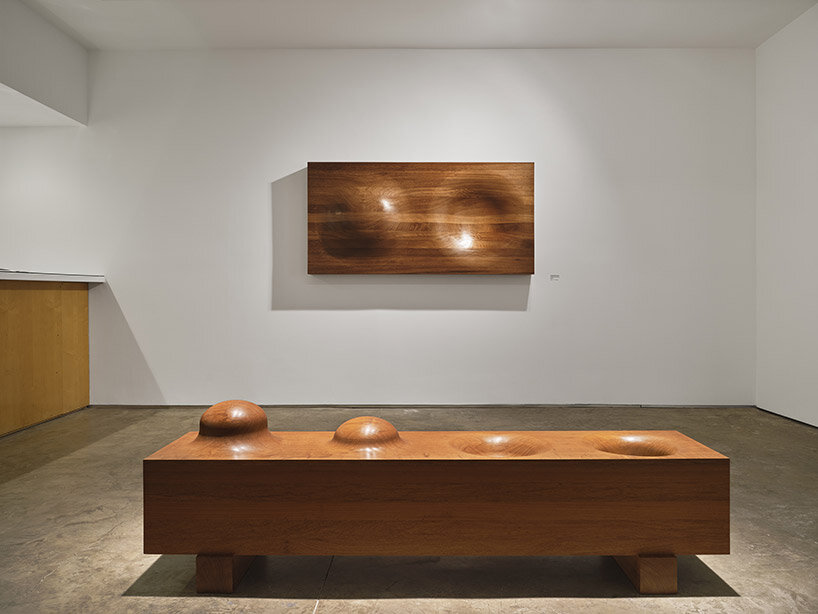
installation view of Jorge Palacios: Paradoxes of Cognitive Constructs: Physics as Language at SEIZAN Gallery
in dialogue with the artist
designboom (DB): your sculptures often explore the intersection of art, physics, and motion. can you tell us about your fascination with these themes and how they influence your creative process?
Jorge Palacios (JP): My interests focus on exploring the mental constructions we create to represent abstract ideas or phenomena. I delve into how, through these constructs, we process information from the world, verify it, and question it — particularly when our perceptions come into apparent contradiction with our learned experience. I concentrate on investigating abstract elements and sensations that, although universally recognizable, lack an attributed morphology. I wonder what would be the shape of abstract concepts such as inertia, balance, velocity, gravity, magnetism, electricity, sound, light, or time.
Some of the sculptures presented in this current exhibition are used as a static vehicle to examine fluidity and movement — the same notions that Harold Edgerton researched using static photographs. Pushing these observations further, I use the laws of physics to delve into how clearly rigid and solid materials can appear to possess liquid and ethereal qualities. One of my more recurrent inspirations is the Pitch Drop experiment, the longest-running lab experiment in science history — initiated by Thomas Parnell in 1927 — that illustrates how the world’s thickest known fluid, and slowest moving liquid, creates the illusion of being solid.
Investigating the field of rheology, among other branches of physics, I analyze the fluidity, deformation, and flow of matter.
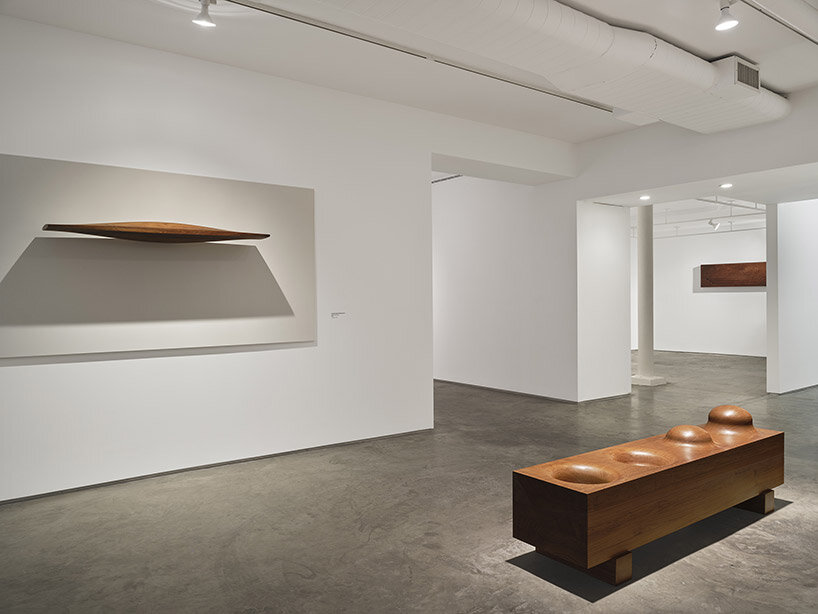
installation view of Jorge Palacios: Paradoxes of Cognitive Constructs: Physics as Language at SEIZAN Gallery
JP (continued): Just as the photographer Berenice Abbott was interested in the laws of physics that determine magnetic behavior, some of my constructs stem from my interest in George Gabriel Stokes’ study of the propagation of waves and Nikola Tesla’s research into the behavior of electricity.
I reflect and ask myself if we can find patterns and curves that repeat in nature at different scales and mediums. In the search for the origin of nature’s morphologies, for my practice, it has been highly motivating to study Newton’s fundamental laws of classical mechanics and find some forms in common. The shape and movement of water flowing through a sinkhole, where the water rotates in a circular pattern, the form of a tornado, where air moves in an upward rotating spiral, and the morphology of a galaxy, where stars and gas rotate around a common center due to gravity, are all examples of rotational motion phenomena. Regardless of their medium, they all surprisingly share a common morphology, from the microscopic to the astronomical scale.
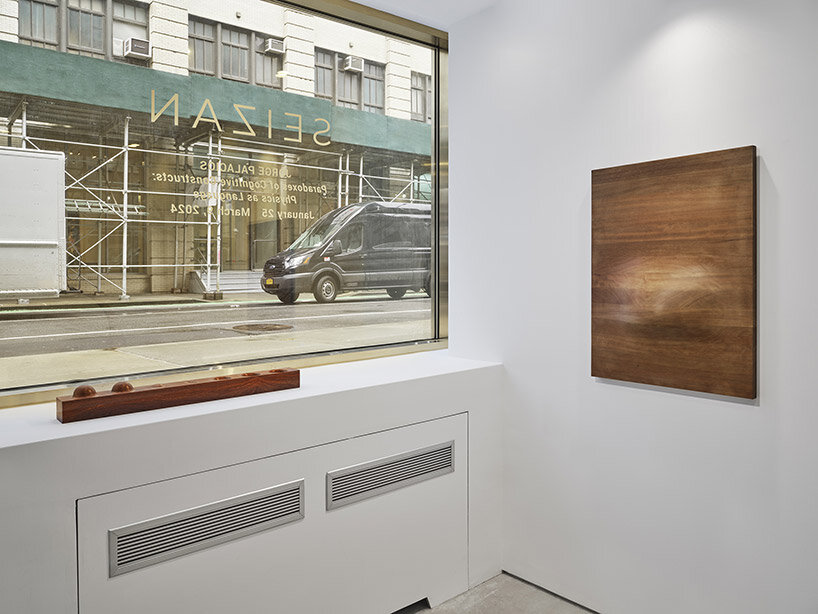
installation view of Jorge Palacios: Paradoxes of Cognitive Constructs: Physics as Language at SEIZAN Gallery
DB: some of your monumental works have a powerful presence in public spaces. how do you approach creating sculptures that interact with their surroundings and engage the audience?
JP: From my perspective, a work of public art is a work that is born from the understanding of the usability of public space and respect. My goal is always to integrate the work so that it feels like it has always belonged to that place.
To do this, from the environment, I study the contextual materials and the scale of those elements with which the sculpture aims to establish a dialogue. I focus on the path of light to take into account its own shadows and those projected in order to be able to determine the correct orientation of the work and understand how the sculpture can be perceived and how it can interact with the citizens and the community that is going to coexist with the work.
DB: wood is your primary medium. what draws you to this material and how does it inform the aesthetic and structural qualities of your sculptures?
JP: Wood, for me, is just the support, what the canvas is for the painter or paper for a photographer. It has to be there, and, of course, it has interesting characteristics, but it is not, and I do not want it to be the protagonist of my work. It is a means to achieve an end: the fact that the volume, the true protagonist of all this, has a presence through the understanding of its morphology through the shadows.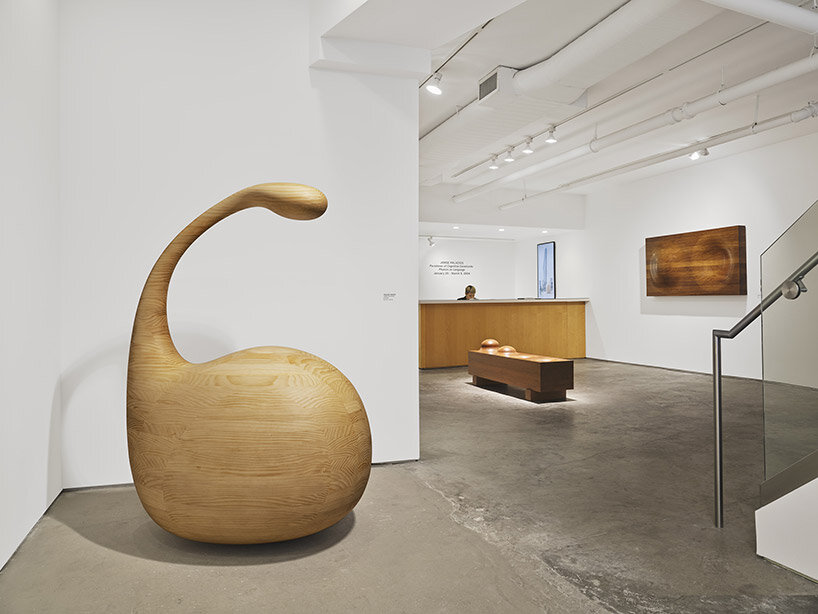
installation view of Jorge Palacios: Paradoxes of Cognitive Constructs: Physics as Language at SEIZAN Gallery
DB: how do you find balance between simplicity and complexity in your work, which often encompass minimalism and abstraction?
JP: The complexity of my work only corresponds to the engineering solutions found inside the sculptures. At an expressive level, I always seek to achieve the highest levels of synthesis and simplification to establish the clearest and sharpest communication possible with the viewer.
There is a quote from Charles Mingus that I have always found very inspiring that expresses very well what I think about simplicity: ‘Making the simple complicated is commonplace; making the complicated simple, awesomely simple, that’s creativity.’
It usually requires more work than it seems to achieve the maximum expression with the minimum of elements, but when you find that point of balance the work flows and feels balanced.
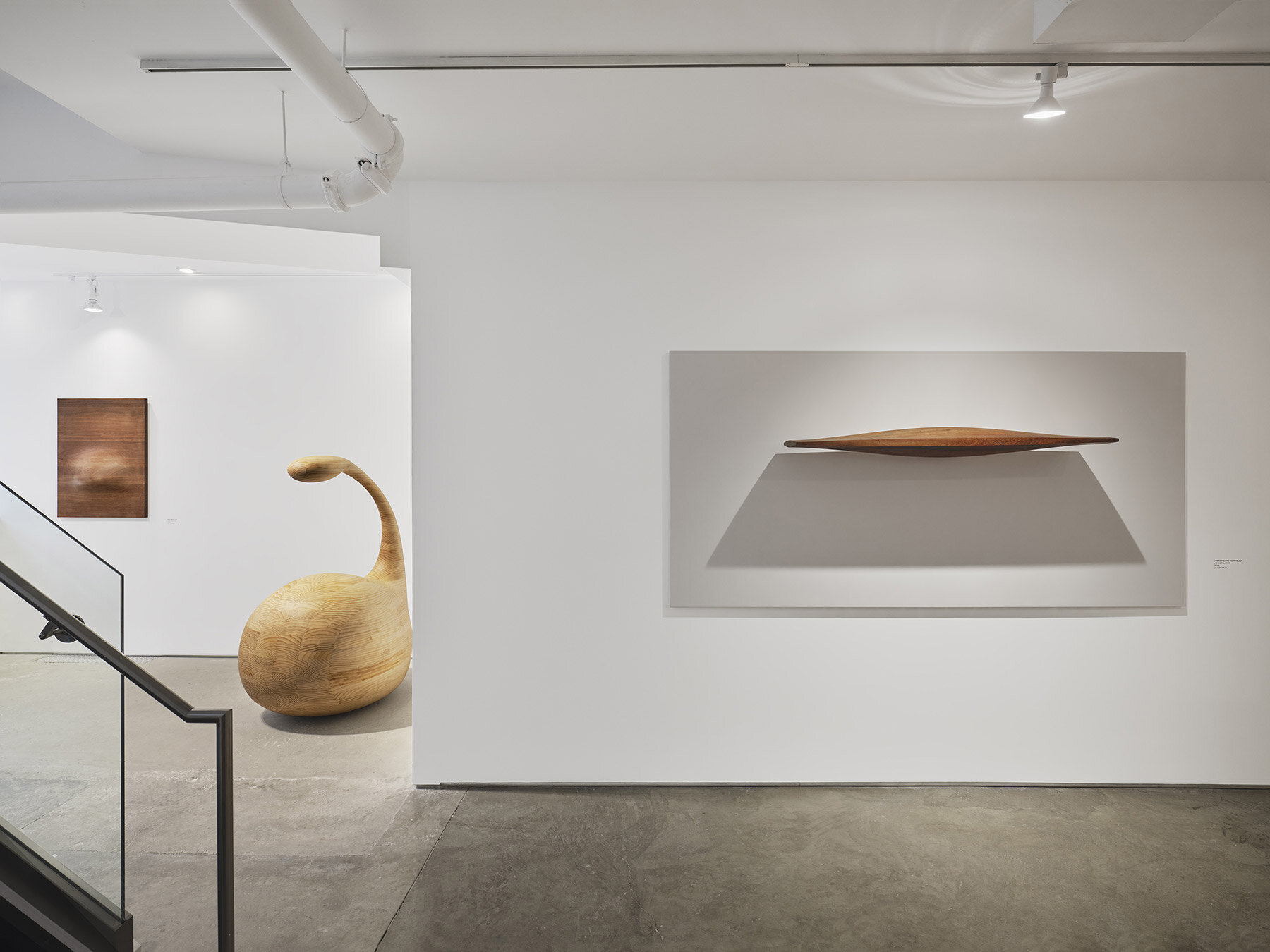
installation view of Jorge Palacios: Paradoxes of Cognitive Constructs: Physics as Language at SEIZAN Gallery
DB: several of your pieces incorporate elements of playfulness and interactivity. how important is it for you to create sculptures that invite the viewer to participate or engage with them in a physical way?
JP: In my work, the ludic component is a conscious way of inciting in the viewer one of the primary instincts that most activate communication. Both homo sapiens and most animal species that show signs of self-awareness or social structures have shown that play is a very important tool when it comes to establishing bonds or empathy. Once this empathy is established, communication can take place and subsequently create a context for deep reflection.
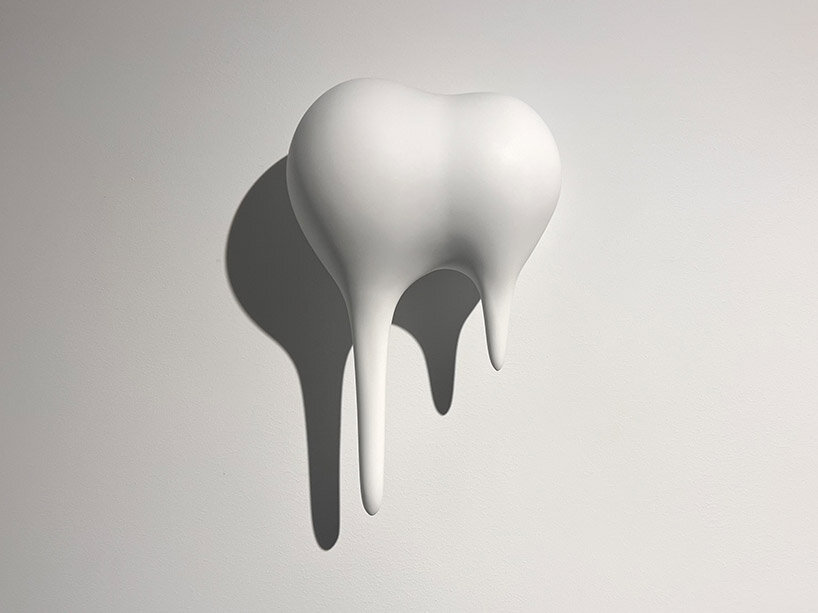
Jorge Palacios, Emerging Particle, 2023, Krion | image © designboom
DB: sustainability and ethical material sourcing are increasingly important considerations in contemporary art. how do you approach these issues in your practice, and what role do they play in your decision-making?
JP: Of course, I know artists who use their artistic work as a tool for environmental activism. I personally don’t feel like an activist. As a person deeply interested in science, I am aware of the problems we have to face, but environmentalism is not part of my artistic discourse.
It is worth stating that wood is one of the few regenerative and sustainable materials if used responsibly. FSC and PEFC certifications guarantee the traceability and regeneration of forest masses, and I work with these types of wood.
In my personal life, like everyone else, I do my part without giving myself medals for this or using it as a marketing tool.
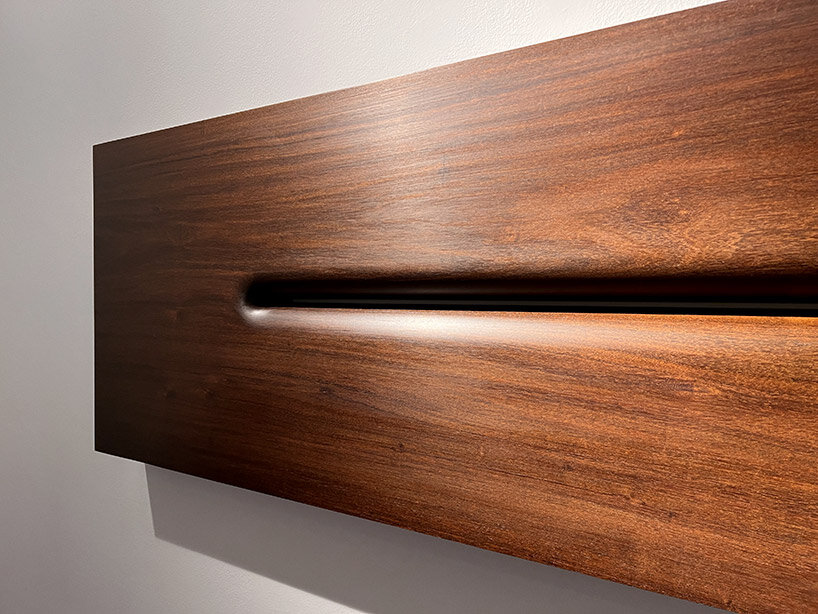
Jorge Palacios, Intersticio, 2022, Ipe | image © designboom
DB: looking ahead, what are your aspirations for your artistic practice? are there any new directions or challenges you’re excited to explore? beyond sculpture, do you have any other creative pursuits or interests that influence your work or inform your artistic vision?
JP: In this exhibition, Paradoxes of Cognitive Constructs: Physics as Language, at SEIZAN Gallery New York, a new material, Krion, is presented to the public for the first time in my body of work. It is a material with a ceramic appearance and mineral origin, with which I can convey apparent softness with a material as rigid as glass and as solid as a stone that is especially suitable for large formats and outdoor use. To some extent, this anticipates the direction my work is taking, although I will probably never abandon wood.
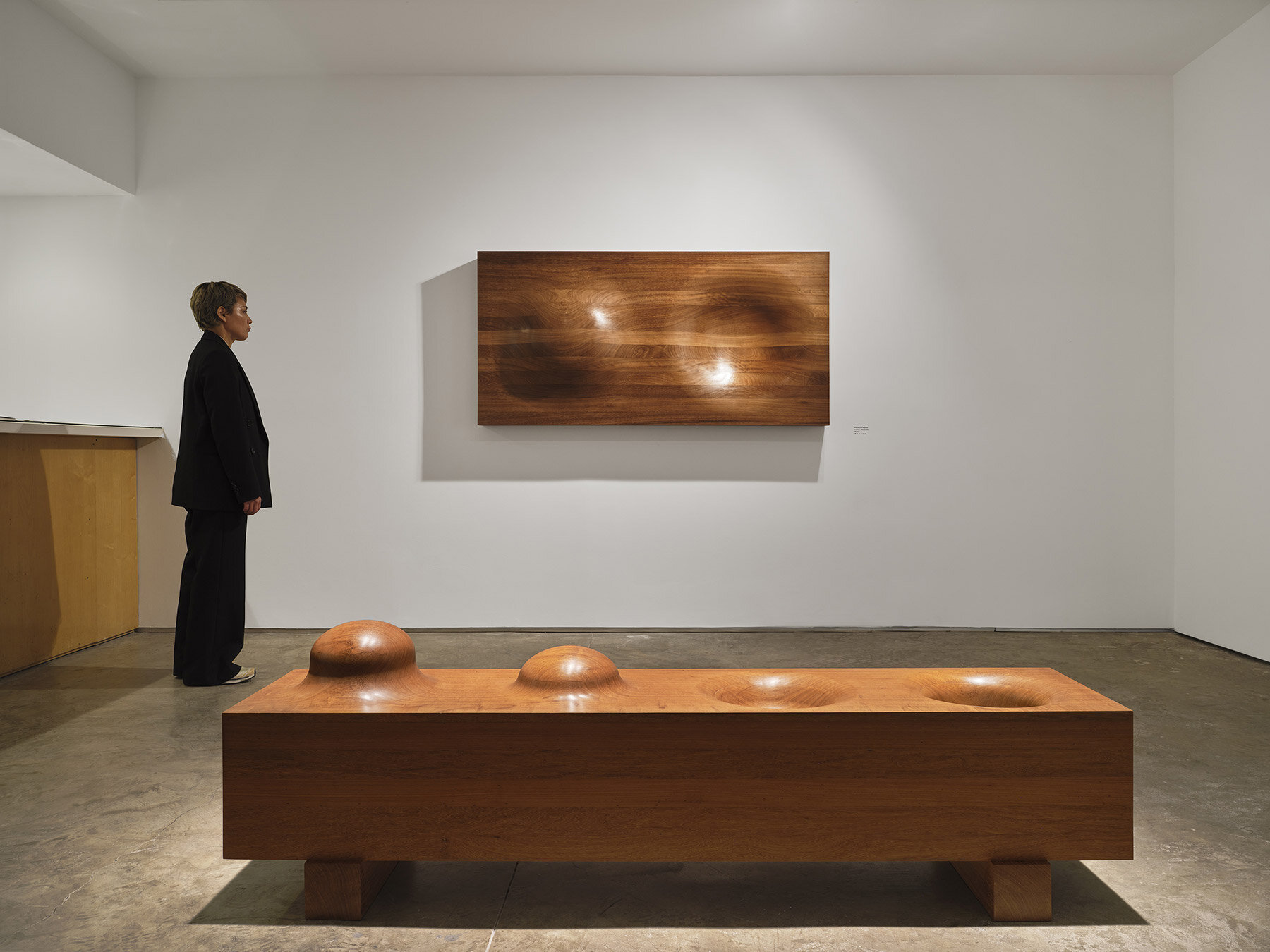
installation view of Jorge Palacios: Paradoxes of Cognitive Constructs: Physics as Language at SEIZAN Gallery
DB: what advice would you give to aspiring artists or designers?
JP: I think these are two different approaches to creation.
In my opinion, a good designer must prioritize function and usability based on ergonomics and scale and then make the product attractive or aesthetic, in addition to other factors such as its industrialization, packaging, and transportation, as well as the profitability or otherwise of the product in the context of the market.
In the case of a visual artist, everything revolves around the need to express a feeling or an idea. My advice is to take all the time necessary to understand what motivates you, not rush or take shortcuts, and identify what makes you special, what is in your emotions, and what is the clearest feelings or emotions sharpest way to express them. The identity and personality of the body of work must be correctly structured when creating a career.
exhibition info:
exhibition title: Paradoxes Of Cognitive Constructs: Physics As Language
artist: Jorge Palacios
gallery: SEIZAN Gallery
location: 525 West 26th St., New York, NY
on view: January 25th — March 9th, 2024
photography: © Thomas Barrett, courtesy SEIZAN
art interviews (138)
sculpture (374)
PRODUCT LIBRARY
a diverse digital database that acts as a valuable guide in gaining insight and information about a product directly from the manufacturer, and serves as a rich reference point in developing a project or scheme.
